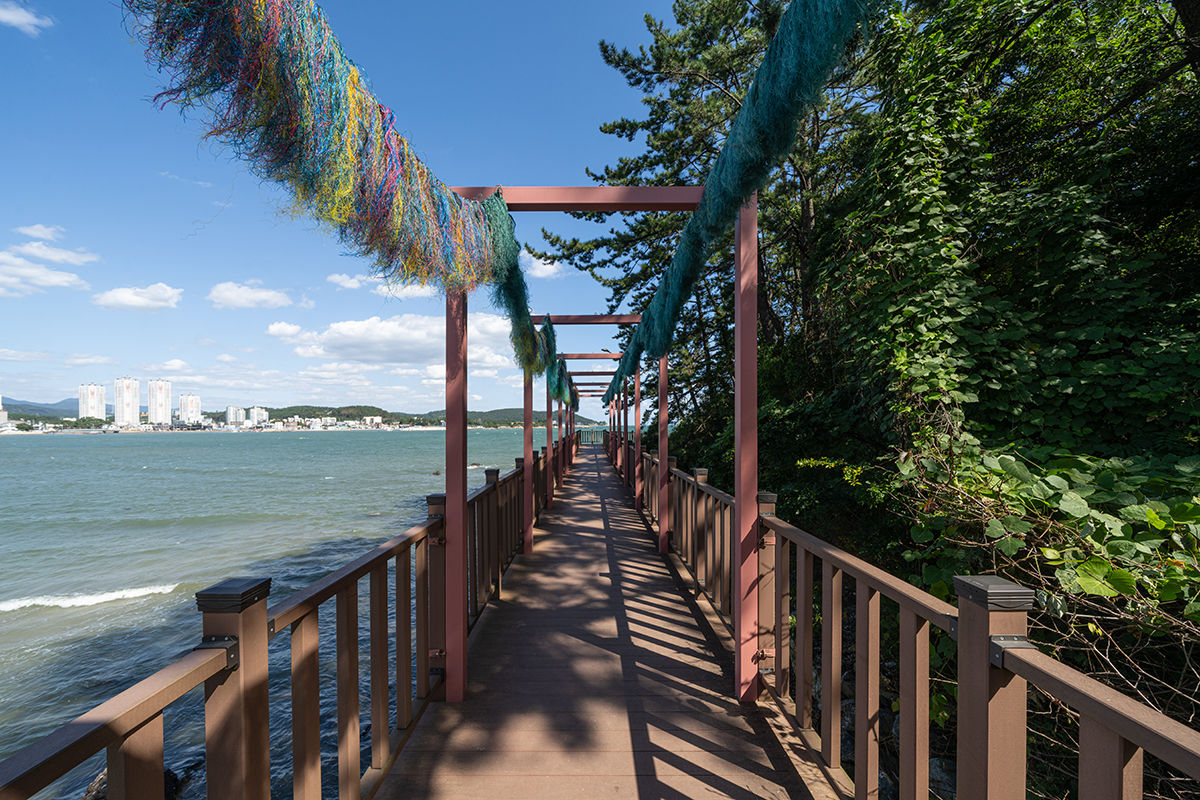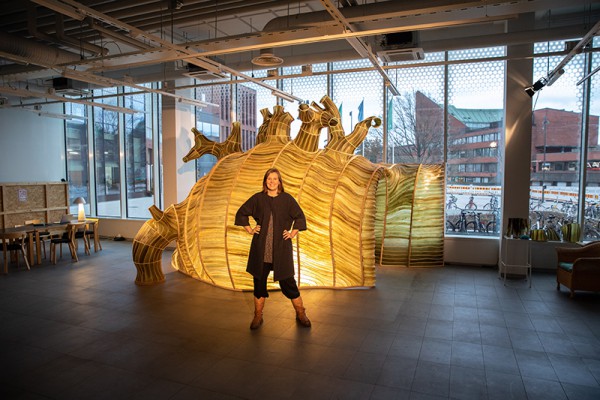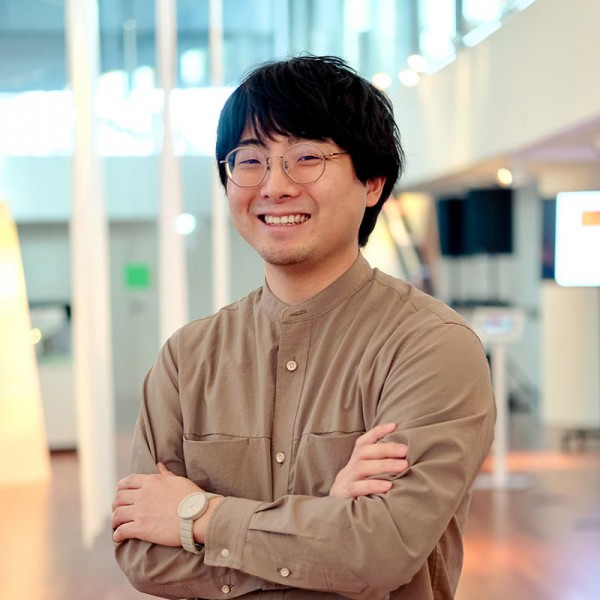Traces of the Waves
2023, Threads from plastic ropes, plastic waste, wood, 300×2100×185cm. Commissioned by Sea Art Festival 2023.

Description
What if we were able to transform immense quantities of plastic objects found on our shores into valuable material?
Traces of the Waves is a new art installation, which forms part of the artist’s ongoing Weaving the Ocean art project series. In this project series, artist Ari Bayuaji transforms plastic waste into textile art, often made in collaboration with artisans.
The site-specific installation, created for this year’s Sea Art Festival, and situated alongside the wooden pathway next to Ilgwang Beach, has been constructed using thousands of plastic threads unraveled from plastic ropes found on beaches and the coast in Bali (Indonesia), as well as found plastic objects gathered from shorelines in Busan (South Korea).
Colorful plastic ropes, which are used for fishing nets, are often found washed up on our coastlines across the world in large quantities. Many times, they are entangled with marine life such as corals, or wrapped around vegetation on the beaches and beyond. But apart from plastic ropes, every year, we produce and consume over 400 million tons of plastic. From these plastic objects, we consume and throw away, about at least 14 million tons end up in the ocean every year, being carried away across the waters. Many of these plastic objects end up along our shorelines and plastic makes up almost 80% of all marine debris, from sea surface waters to deep-sea sediments.
Traces of the Waves addresses pressing environmental and social issues such as the immense pollution of our oceans and its consequences, the destruction of marine life, and the loss of the coastlines’ natural beauty. Bayuaji - working in collaboration with communities and artisans - goes through a meticulous process of collecting little by little plastic ropes and other plastic objects found on the beach, washing these materials several times, and separating them until they are transformed into usable fine threads that can be woven into textiles or used in his art installations such as this one.
This long process becomes a collaborative, caring and conciliatory effort that transforms an insignificant and cheap plastic object that pollutes our waters, giving it a new life as a useful and valuable artistic material. A devastating and negative impact on the environment becomes a “positive” outcome, drawing on collectivity and common endeavor, while celebrating craftsmanship. At the same time, Bayuaji pays homage to his Indonesian culture and textile traditions, but also the importance and role of the sea, which is right to the center of Balinese culture, philosophy, spirituality and rituals.
As one walks through the Traces of the Waves path, colorful strands and tufts of plastic threads can evoke forms of marine creatures like jellyfish and corals or the feel of seaweed strands and sea grasses moving in the waters.



